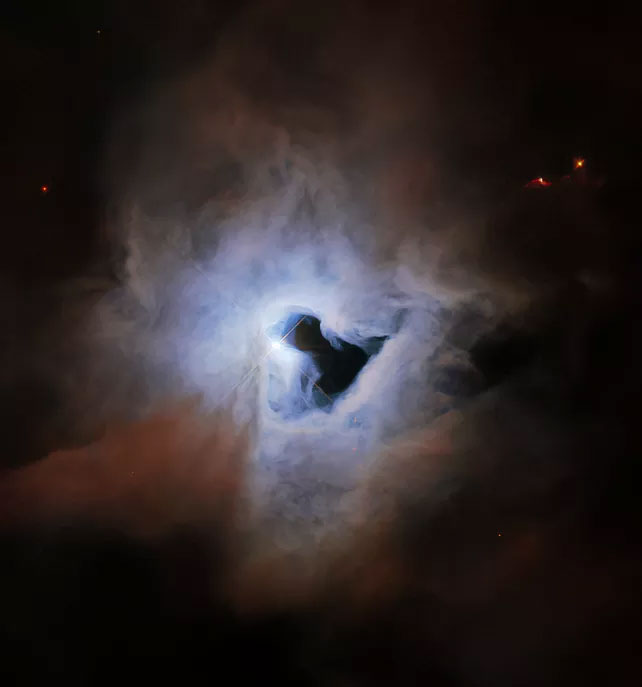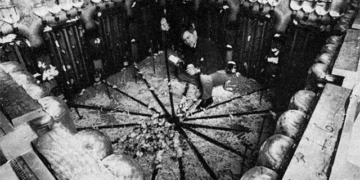The NASA/ESA Hubble Space Telescope has recently captured stunning images from a distant region of space, located 1,350 light-years away from us.
According to Science Alert, the eerie object known as NGC 1999 is actually a “reflection nebula”. It can be understood as a remnant left behind after the star formation process, in this case, a system of several small stars named V380 Orionis in the Orion constellation.
This ghostly nebula is located quite close to the famous star nursery known as the Orion Nebula, which is also the closest star nursery to Earth.

Stunning image recently released by ESA – (Photo: ESA/NASA/ESO)
The void within the reflection nebula, referred to by scientists as the “cosmic keyhole” or “gateway to another universe”, is the most intriguing aspect of the nebula.
Initially, ESA believed it could be a rare astronomical object known as a Bok globule, a dense, cold, and extremely dark cloud.
However, subsequent research revealed that it is indeed a massive hole surrounded by glowing mist. While it is thought to be a result of the star formation process, the specific mechanism that creates this peculiar void remains unclear to scientists.
To allow astronomy enthusiasts worldwide to admire this mysterious object, researchers combined Hubble data with images from ESA’s Herschel Space Observatory, adjusting the colors slightly to create the recently released image by ESA.

















































